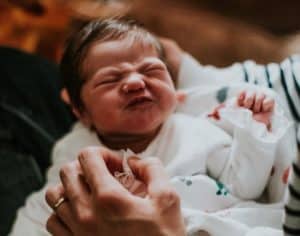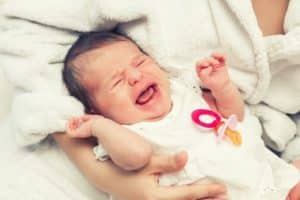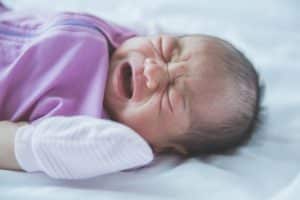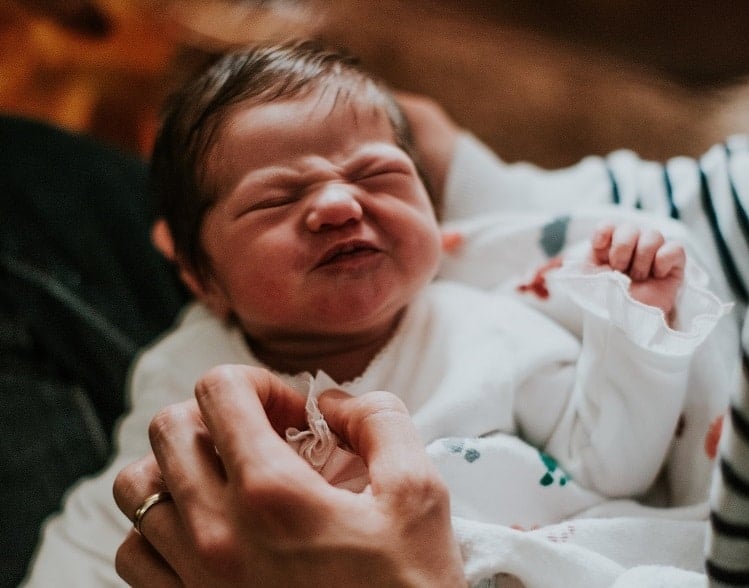Hello Parents,
In this article, I would like to talk about a subject that concerns parents who experience febrile seizures. A mother wrote to me recently via my website to talk about her 11-month-old baby’s febrile seizures. She said that she felt powerless when trying to deal with this impressive event occurring in such a small body.
It’s rather spectacular to see a small child convulse, especially when it’s our own. Most people think their baby is in a trance or is having an epileptic seizure, even if they’re generally fine. Merely having seen this type of episode makes parents stressed, anticipating another seizure. How can you avoid this from happening again? Let’s explore!
Stats
The literature tells us that febrile seizures can occur in all children who are in good health and developing normally. They can start at 3 months of age. A child can have a seizure attack due to a fast increase in their body temperature up to 5 years of age. This will peak around 18 months. It’s noted that 2%-7% of young children will have at least one febrile seizure before turning 5.
Defining Febrile Seizures
Febrile seizures are typically defined as an affliction in a young child 3 months to 5 years of age. There is often a fever without apparent intracerable infection or identified cause. Most of the time the seizures aren’t dangerous, are short and won’t impact the child. There is no danger to your baby’s life, nor a danger for its cerebral health or intellectual faculties.
Why does it happen?

Like I often say, a young baby has intense reactions, physiological responses or defences at the cerebral level. This is why, when fever occurs (a febrile state), with a fast and severe increase in body temperature, the baby’s cerebral thermoregulatory mechanism activated. As a reaction, seizures can occur. This is why we see fewer attacks after 3 years of age because the child continues to mature and responses to a fever will less likely lead to a seizure.
There is always a tolerance threshold for increased temperature applying to each child. For some, the seizure will occur faster than for others, say at 38 degrees. For others, it might be around 40 degrees Celsius. If a child has had a febrile seizure in the past, they’re more likely to have one in the future when the threshold is met, until their brain matures.
Crédit photo photo : brytny.com
Clinical Signs of a Febrile Seizure
There are two types of febrile seizure attacks—simple and complex. The clinical signs are pretty specific. Here is an overview of possible signs based on the two types: y a deux formes de crises de convulsion fébrile, la forme simple et la forme complexe. Les signes cliniques seront assez spécifiques. Voyez en résumé les manifestations possibles selon les deux formes possibles :
Simple Type
- This is the most frequent type.
- an attack, there may be 1–3 seizures.
- The attack may last from 1 to 15 minutes, but frequently it’s from 1 to 5 minutes.
- Their appendages will jerk symmetrically on both sides, and there will be clonic movement as well. Clonic movements are involuntary muscular contractions, such as rhythmic spasms, alternating with periods of relaxation and release which we also call “hypotonia.” The body becomes soft and relaxed.
This type of attack isn’t associated with a neurological disorder. Even if the attack is longer, it isn’t necessarily a bad omen for the child if they’re generally healthy.
Complex Type
- It frequently occurs in children with neurological symptoms or when there are psychomotor development disorders.
- Tonic-clonic seizures are often longer than with the simple type, and you can add increased tonicity to the contraction, with sudden and severe stiffness which we call the tonic phase. A “clonic” contraction combined with “tonic” stiffness is what we call a tonic-clonic seizure.
- The seizures can occur without a fever.
- The seizures can repeat several times during a 24-hour period.
- The clinical signs can occur unilaterally.
Diagnosis

To diagnose the events occurring in your baby, the doctor must complete a full evaluation of your situation based on the history before the seizures occurred and your child’s age. The description you will give will allow the doctor to make a diagnosis. A full physical exam of the baby and a questionnaire will be completed.
Is there a subjacent infection? A vaccination? A glycemia or calcium issue in the baby’s blood?
The doctor will likely request additional tests for febrile seizures, but if they suspect something, family history, problematic medical history, they may complete a lumbar puncture to eliminate meningitis. Alternatively, they order an electroencephalogram (EEG) to look for a link with the baby’s cerebral state.
Photo credit: sborisov
Treatment
The seizures end on their own and giving them anti-fever medications, such as Tempra or Advil (for babies over 6 months) can diminish the length and repetitiveness of the convulsion attacks.
La crise se résout le plus souvent spontanément et le fait de réduire la hausse de température avec des anti-fièvres comme le Tempra, l’Advil (pour nourrisson de plus de 6 mois) peut diminuer la durée et la répétition des crises de convulsions.
What you should do during a febrile seizure attack:
- Always supervise your baby.
- Lay down your baby on the side in a safe environment.
- Make sure that their airways are clear.
- Check for possible vomiting.
- Ne pas empêcher les mouvements et rien dans la bouche (((( manque dans la traduction)))
Prevent an increase in temperature (measures to prevent hyperthermia):
- Avoid overdressing or covering your baby, as it increases their body temperature.Évitez de trop habiller ou couvrir votre bébé car cela augmente la température corporelle.
- You can give them a warm bath but avoid a significant difference in temperature with the ambient air.
- Give them anti-fever medication based on the manufacturer’s posology regarding your baby’s age or recent weight (associated with the Q/R for anti-fever medications).
- Give them the appropriate treatment if you have a prescription for a diagnosed infection.
Baby Risk Factors for Febrile Seizures

It’s difficult to identify precise risk factors for the occurrence of febrile seizure attacks. It seems that there may be a family predisposition. The genetic contribution accounts for about 30% of the appearance of attacks in children, especially if the two parents have already had them.
Baby’s aged under one year also are at a higher risk, as I explained above in this article. Their system is immature. And finally, a child that has already had febrile seizures has a higher risk for others based on their tolerance threshold under the same conditions. This can continue until 5 years of age.
((( manque une partie non traduite ici : Idéalement après une convulsion, on devrait faire voir le bébé par un professionnel de la santé pour s’assurer qu’il n’y a pas rien relié de grave. Une consultation sera aussi à prévoir si le bébé convulse avant 6 mois de vie, si la convulsion dure plus de 3 minutes et si l’état du bébé se détériore ou ne revient pas à sa normale assez rapidement.))))
That covers the essential information about febrile seizures. I hope this has been informative and helps you act in a preventative way when your child’s temperature rises.
To learn more about the topic, read these articles:
- List of things to do if your baby cries a lot
- How do I know if my baby has bronchitis, and how do I treat bronchitis?
Motor Development in Babies from 0 to 12 Months
Welcoming a Different Baby
- Liste des chose à faire si bébé pleure beaucoup
- Comment savoir si mon bébé a une bronchiolite et comment soigner la bronchiolite?
Or watch these videos:
- Motor Development in Babies from 0 to 12 Months
- Welcoming a Different Baby
- Le développement moteur des bébés de 0 à 12 mois
- Accueillir un bébé différent
Talk soon,
Marie
The Baby Expert
Photo Credit: Ferli


